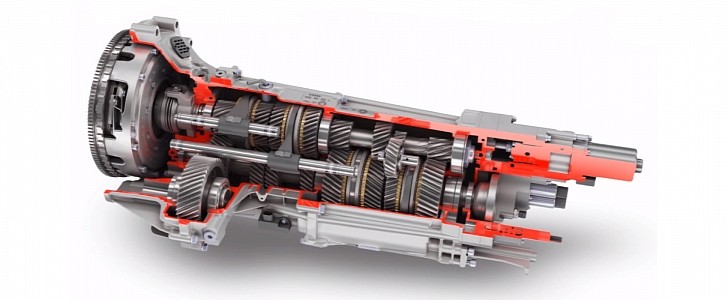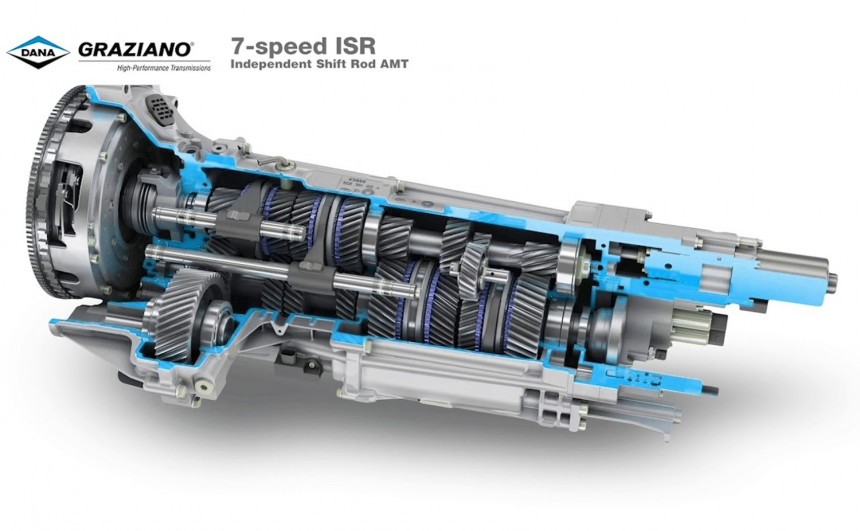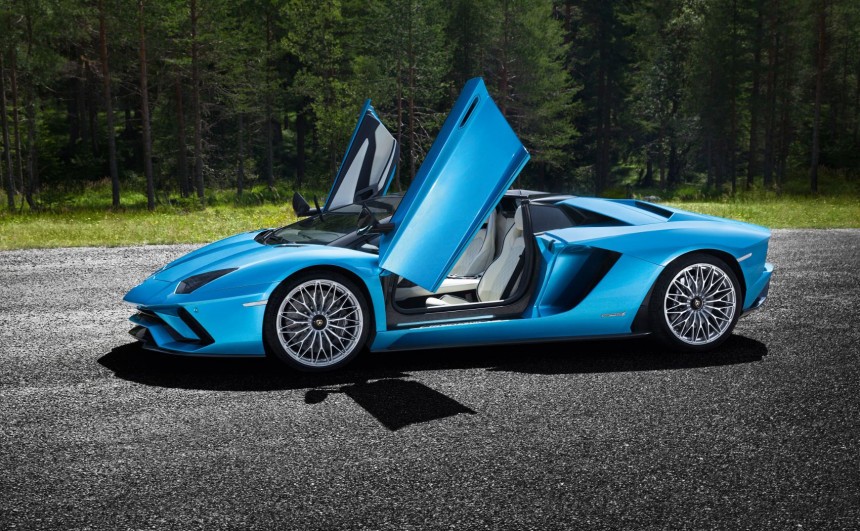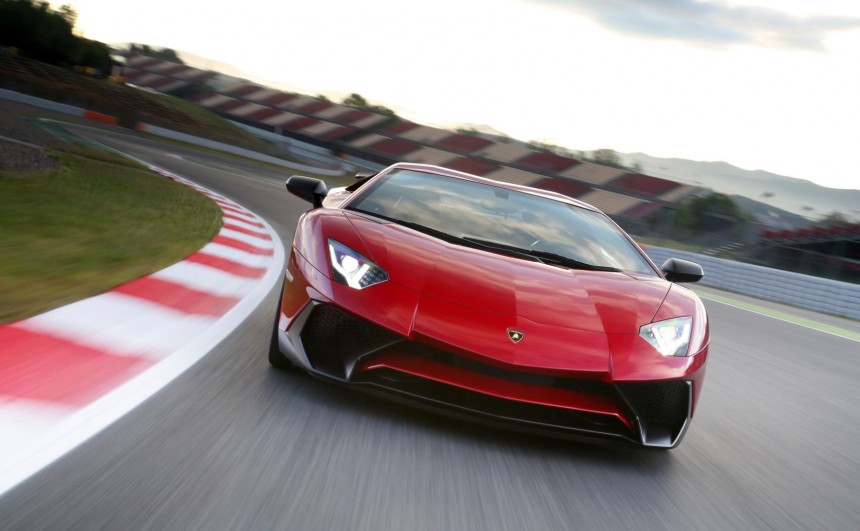The exquisite Lamborghini Aventador is one of the most sought-after supercars out there, yet owners seem to have an issue with its independent shifting rod (ISR) automated manual. So let’s take a look at this controversial gearbox, understand how it works, and determine whether it’s the Achilles' heel of the brilliant supercar.
Launched a decade ago, at the 2011 Geneva Motor Show, the Aventador became the Italian company’s flagship model, replacing the Murciélago.
Until then, the vast majority of Lamborghinis were powered by a V12 that was designed in the sixties by Giotto Bizzarrini and received multiple updates throughout the years. However, the Aventador came with an all-new twelve-cylinder design that engineers at Sant'Agata Bolognese vowed would be more efficient and powerful. Like the last iteration of its predecessor, it displaces 6.5-liters and can spit out between 690 hp (565 kW) in the standard model and 760 hp (565 kW) in the SVJ.
Regardless of the variant, the engine is mated to a single-clutch automated (robotized) manual gearbox that is a bit controversial nowadays but was hailed as a major innovation when it was revealed.
During the Aventador’s development process, the Turin-based experts at Graziano Trasmissioni (now Dana Graziano) were commissioned to build the transmission. Since this was a period when economies were recovering from the financial crisis of 2007–2008, the manufacturer probably decided that it would be cheaper to build a single transmission, so the new supercar became the first Lamborghini flagship that didn’t come with a manual.
Officially, the carmaker states that they chose the robotized manual design because it offered a compact, lightweight design and could do a better job of coping with the huge amount of torque than the dual-clutch automatic variants available at the time.
Thus, the ISR gearbox was born, and in the official press release, the manufacturer claimed it could execute shifts in 50 milliseconds or “less than the blink of an eye”.
The unit is laid out as a two-shaft transmission with seven forward gears and one reverse. For increased reliability, the synchronizing rings are made from carbon fiber, while the heavily publicized short shift times are facilitated by the innovative independent shifting rod technology.
To understand how this works, let’s summarize what happens inside a conventional automated or fully manual transmission. Here, the gear wheels for the second and third gears (for example) are located side by side so, when the driver changes gears, the shifting sleeve and synchronizer unit are moved along the shifting rod from second through neutral and then to third. This means that one gear has to be disengaged before another can be engaged.
With the ISR, this process is shortened by employing separate gears and triggering the shifting sleeves with two independent shifting rods. While one rod is disengaging a gear, the second already engages the next, and this results in 40% faster shifting times than what you would get from any other automated manual, according to Lamborghini.
That all sounds extremely promising, yet many owners have complained that the transmission just doesn’t live up to the hype. The first thing they mention is that it doesn’t shift as smoothly as a dual-clutch at slower speeds, and that makes it feel outdated.
While I wasn’t fortunate enough to drive the Aventador, I really can’t understand why someone would complain about how shifting feels at slow speeds. We're talking about a hugely powerful supercar that is made for speed, not daily driving. Furthermore, it’s not built to be smooth because it isn’t a Bentley. It dons a bull on its badges, so the essence of a Lamborghini is to jerk you around and raise your adrenaline levels at all times, so I think this issue is raised by those who simply buy this car for its looks and popularity but don’t really appreciate or understand what it signifies.
Another problem some owners have reported has to do with the clutch overheating. This apparently occurs in Strada mode while driving at low revs, pointing to a design flaw of the transmission’s cooling system. However, in Lamborghini’s defense, I have to point out again that this car is not designed to be driven in bumper-to-bumper traffic. The issue doesn’t occur while cruising on the highway or attempting to beat lap records on the track, so the gearbox serves its purpose.
The last and rarest entry on the list of complaints is a transmission leak that affects early 2012 models. It seems this is caused by a poorly designed seal that wears out prematurely and results in loss of oil. Some owners didn’t notice this leak in time, so they ended up with a blown transmission. Fortunately, Lamborghini recognized this issue and fixed it on newer models.
To conclude, the ISR gearbox is far from perfect, but for the early 2010s, it was technologically advanced. Those who criticize the manufacturer for not upgrading to a dual-clutch in recent years need to understand that fitting one without extensive chassis modifications is nearly impossible, as these types of transmissions are bulkier than the automated manual.
The Aventador celebrates its tenth anniversary this year, so a successor is just around the corner. I have no doubts that the future flagship will employ a state-of-the-art dual-clutch that will please even the most pretentious customers, but it will be interesting to see if it will be linked to a naturally-aspirated V12 that doesn’t use any hybrid technologies.
Until then, the vast majority of Lamborghinis were powered by a V12 that was designed in the sixties by Giotto Bizzarrini and received multiple updates throughout the years. However, the Aventador came with an all-new twelve-cylinder design that engineers at Sant'Agata Bolognese vowed would be more efficient and powerful. Like the last iteration of its predecessor, it displaces 6.5-liters and can spit out between 690 hp (565 kW) in the standard model and 760 hp (565 kW) in the SVJ.
Regardless of the variant, the engine is mated to a single-clutch automated (robotized) manual gearbox that is a bit controversial nowadays but was hailed as a major innovation when it was revealed.
During the Aventador’s development process, the Turin-based experts at Graziano Trasmissioni (now Dana Graziano) were commissioned to build the transmission. Since this was a period when economies were recovering from the financial crisis of 2007–2008, the manufacturer probably decided that it would be cheaper to build a single transmission, so the new supercar became the first Lamborghini flagship that didn’t come with a manual.
Officially, the carmaker states that they chose the robotized manual design because it offered a compact, lightweight design and could do a better job of coping with the huge amount of torque than the dual-clutch automatic variants available at the time.
The unit is laid out as a two-shaft transmission with seven forward gears and one reverse. For increased reliability, the synchronizing rings are made from carbon fiber, while the heavily publicized short shift times are facilitated by the innovative independent shifting rod technology.
To understand how this works, let’s summarize what happens inside a conventional automated or fully manual transmission. Here, the gear wheels for the second and third gears (for example) are located side by side so, when the driver changes gears, the shifting sleeve and synchronizer unit are moved along the shifting rod from second through neutral and then to third. This means that one gear has to be disengaged before another can be engaged.
With the ISR, this process is shortened by employing separate gears and triggering the shifting sleeves with two independent shifting rods. While one rod is disengaging a gear, the second already engages the next, and this results in 40% faster shifting times than what you would get from any other automated manual, according to Lamborghini.
While I wasn’t fortunate enough to drive the Aventador, I really can’t understand why someone would complain about how shifting feels at slow speeds. We're talking about a hugely powerful supercar that is made for speed, not daily driving. Furthermore, it’s not built to be smooth because it isn’t a Bentley. It dons a bull on its badges, so the essence of a Lamborghini is to jerk you around and raise your adrenaline levels at all times, so I think this issue is raised by those who simply buy this car for its looks and popularity but don’t really appreciate or understand what it signifies.
Another problem some owners have reported has to do with the clutch overheating. This apparently occurs in Strada mode while driving at low revs, pointing to a design flaw of the transmission’s cooling system. However, in Lamborghini’s defense, I have to point out again that this car is not designed to be driven in bumper-to-bumper traffic. The issue doesn’t occur while cruising on the highway or attempting to beat lap records on the track, so the gearbox serves its purpose.
To conclude, the ISR gearbox is far from perfect, but for the early 2010s, it was technologically advanced. Those who criticize the manufacturer for not upgrading to a dual-clutch in recent years need to understand that fitting one without extensive chassis modifications is nearly impossible, as these types of transmissions are bulkier than the automated manual.
The Aventador celebrates its tenth anniversary this year, so a successor is just around the corner. I have no doubts that the future flagship will employ a state-of-the-art dual-clutch that will please even the most pretentious customers, but it will be interesting to see if it will be linked to a naturally-aspirated V12 that doesn’t use any hybrid technologies.





















